Cross over into the New Year with the Japanese tradition of eating a piping hot bowl of soba noodle soup called Toshikoshi Soba. This simple Japanese noodle dish will melt away the hardship of the past year and welcome the new journey ahead!
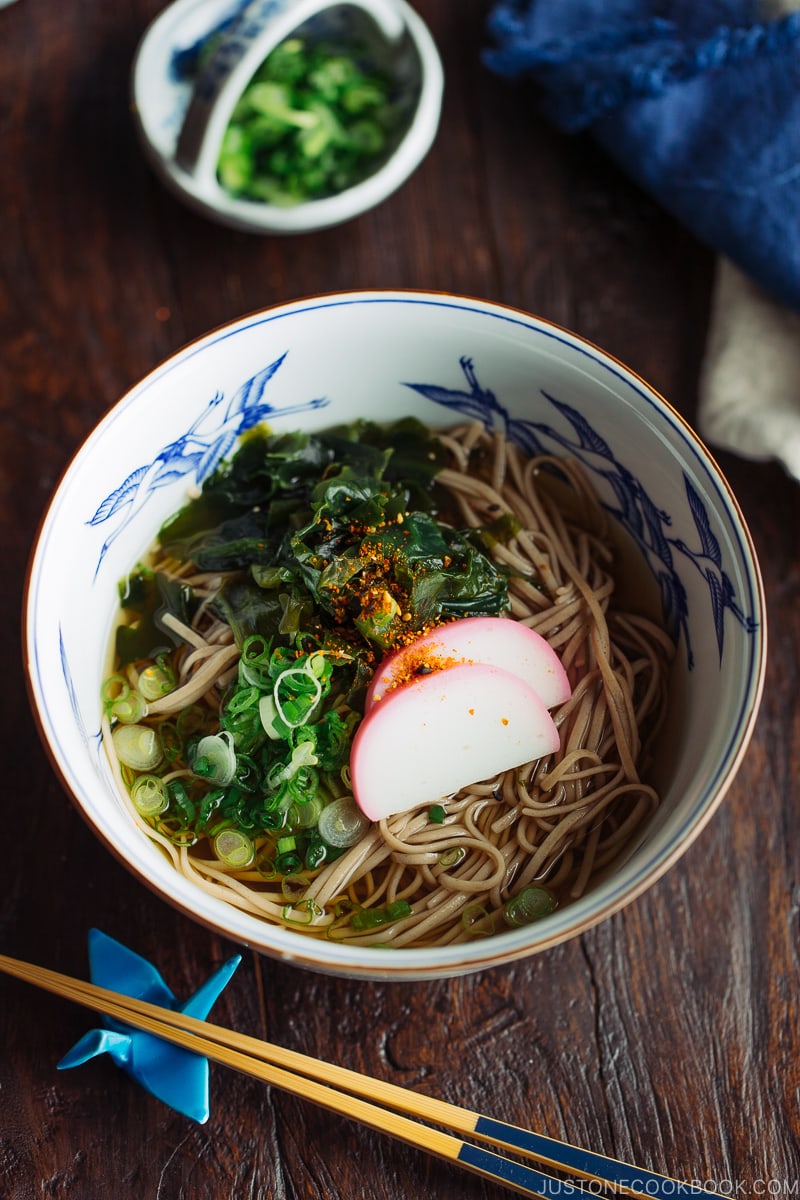
On New Year’s Eve or Ōmisoka (大晦日), it is customary for the Japanese to reflect on the past year and usher in the coming year while enjoying a hot bowl of soba noodles called Toshikoshi Soba (年越し蕎麦), or year-crossing noodle. What better way to cross over a symbolic bridge than slurping up soba noodles?
Table of Contents
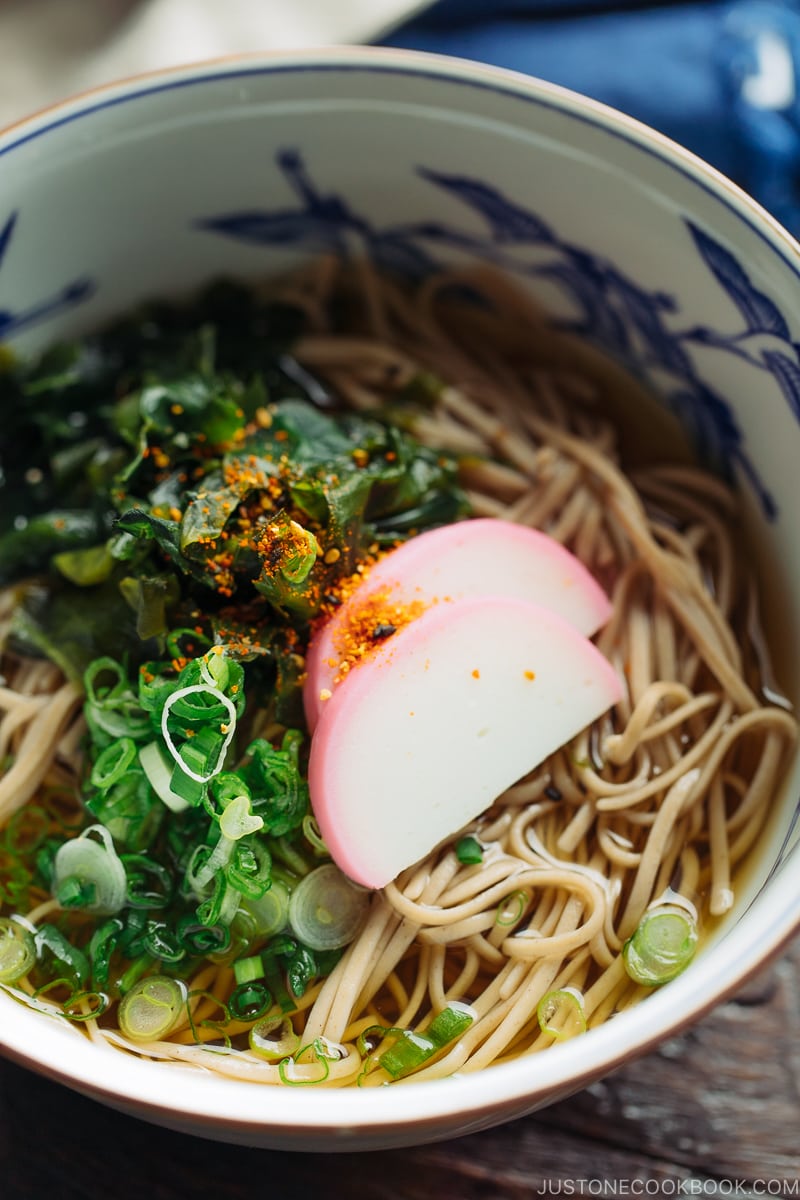
What is Toshikoshi Soba (Japanese New Year’s Eve Noodles)?
Like many cultures, New Year in Japan is about beginning with a fresh, clean slate. That’s the essence of toshikoshi soba—a hot buckwheat noodle soup that is healthy and easy to make, and full of symbolism.
As a tradition, toshikoshi soba is usually served in its simplest form—buckwheat soba noodles in a hot dashi broth garnished with only finely chopped scallions. But if you’d like, you can take it to the next level by topping it with tempura, kamaboko fish cakes, or a raw egg.
The Toshikoshi Soba recipe I am sharing today is featured on the popular Japanese TV drama called “Shinya Shokudo (深夜食堂)” or “Midnight Diner: Tokyo Stories” on Netflix.
Midnight Diner features dishes that are more representative of Japanese home-cooked recipes that you might not have seen in your local Japanese restaurants. “New Year’s Eve Noodles” episode is in Season 1, Episode 10 on Netflix.
Tradition of Eating Soba Noodles on New Year’s Eve
The tradition of eating soba noodles on New Year’s Eve started as early as the 13th or 14th century in Japan. However, it was not until the Edo Period—when the common class developed customary religious and superstitious rituals—that the tradition of eating toshikoshi soba become established for the Japanese people.
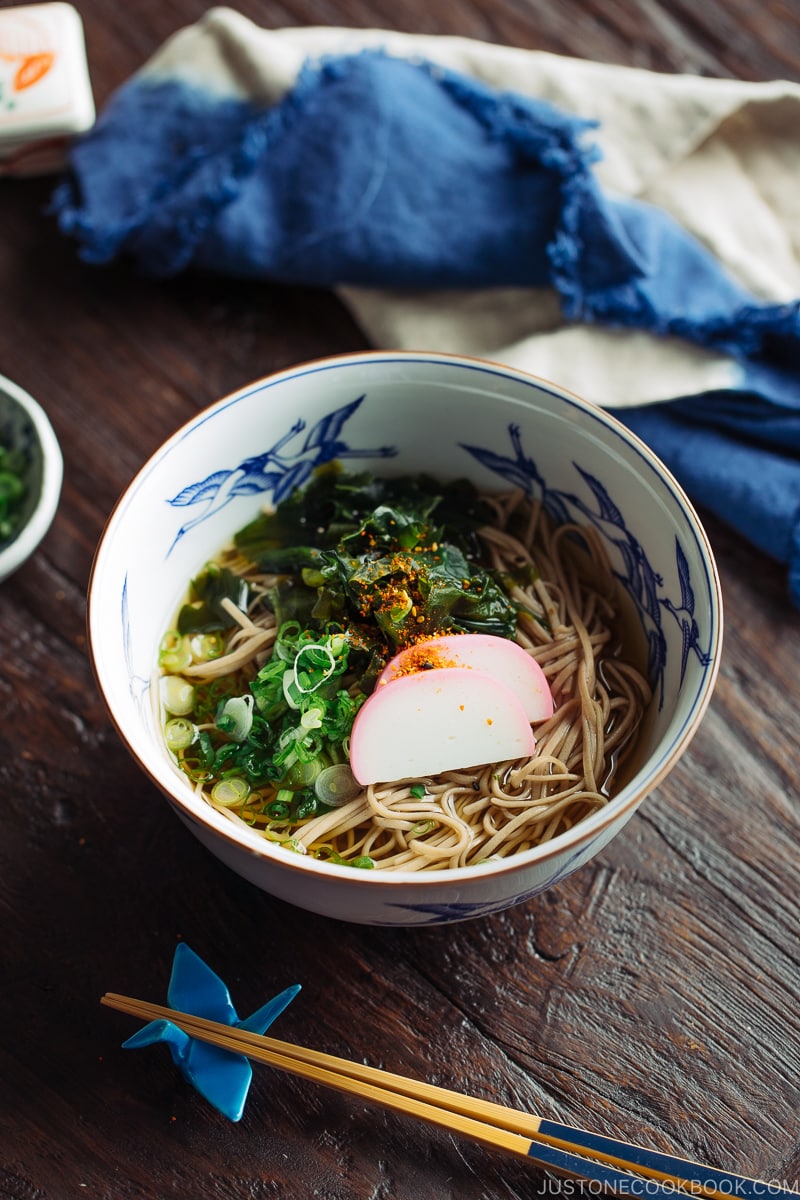
With the hope of good fortune in each bowl, it’s easy to imagine the custom being adopted quickly from family to family, slurping in the symbolism of soba noodles:
- To enjoy a fulfilling, peaceful life with every slurp of the long noodles.
- To break free from the past.
- To gather strength and resilience like the tough buckwheat crop.
- To grow your fortune just as buckwheat flour was once used by goldsmiths to gather leftover gold dust.
Superstitious or not, eating toshikoshi soba on New Year’s Eve has become one of the most enduring traditions observed by the Japanese people.
Make Good Dashi for Toshikoshi Soba
A good tasty broth is elemental for a simple noodle soup like this. After all, making good dashi (Japanese soup stock) is what defines the dish.
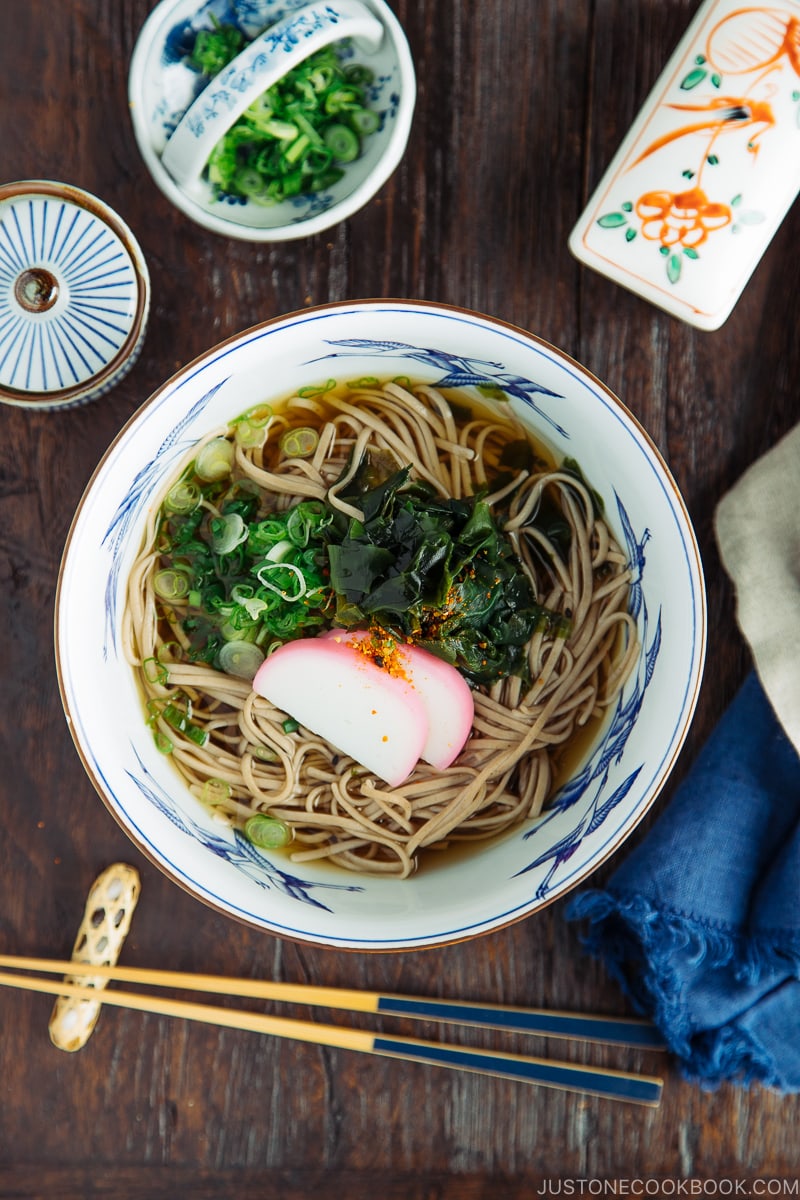
This dashi-based soup broth is delicate, light, and full of umami—thanks to the concentrated flavors from kombu (dried kelp) and katsuobushi (dried bonito flakes). It is fast and super simple to make, and no chicken or vegetable stock can replace its unique taste. You can read more about dashi in this post.
I wouldn’t recommend taking shortcuts like using dashi powder unless you have absolutely no choice. The difference it makes is tremendous. With a solid soup broth, you’ll want to drink it all up!
Vegan/Vegetarian Soba Noodle Soup
To make a vegan or vegetarian Toshikoshi Soba, it’s as simple as switching out some ingredients:
- Make Vegan Dashi with kombu and dried shiitake mushrooms.
- Skip the kamaboko (fish cake) and add tofu or any other vegetarian/vegan-friendly toppings.
Ingredients You’ll Need
- dried soba noodles (buckwheat noodles)
- water
- kombu (dried kelp)
- katsuobushi (dried bonito flakes) – skip for vegetarian/vegan and make vegan dashi
- sake
- mirin
- usukuchi (light-colored) soy sauce – (or regular soy sauce)
- kosher salt – I use Diamond Crystal brand
- toppings: dried wakame seaweed, kamaboko (fish cake), and green onion/scallion
- shichimi togarashi (Japanese seven spice) – optional, for a spicy kick
How To Make Toshikoshi Soba
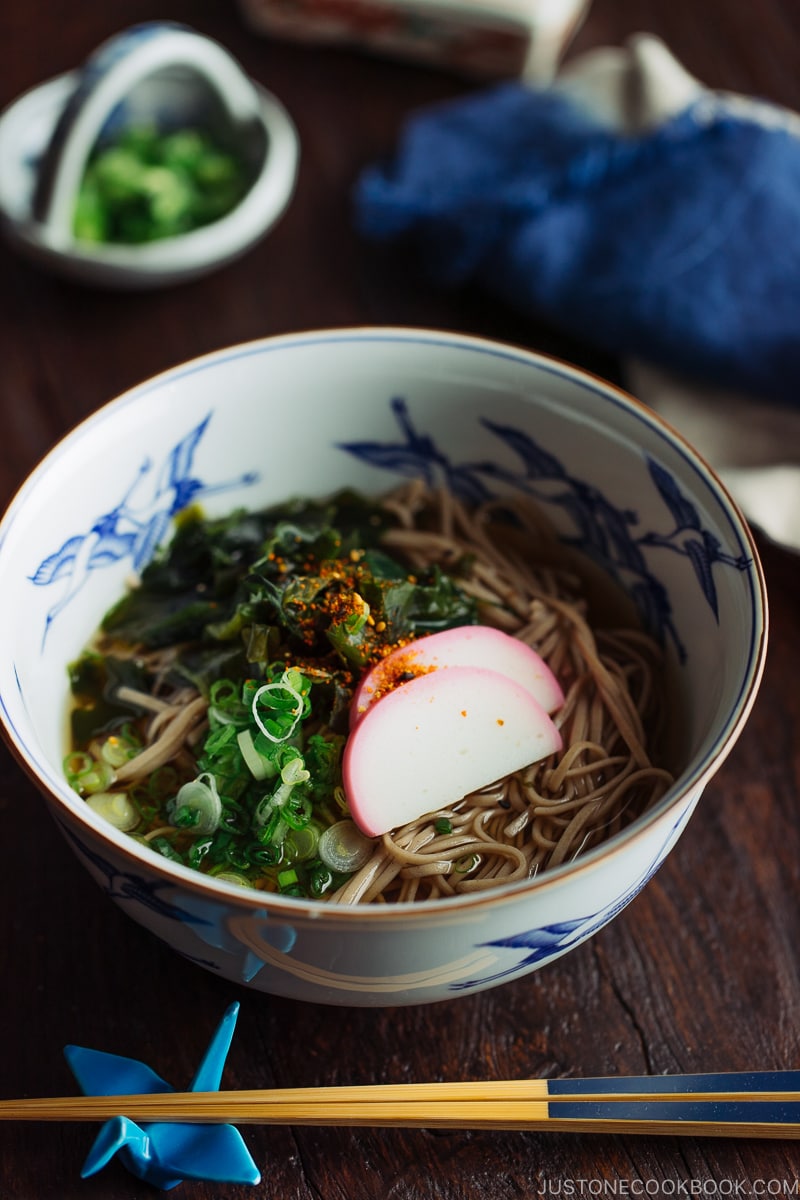
- Make the homemade dashi. Slowly bring the water and kept to a boil in a medium saucepan. Add the dried bonito flakes and simmer for 30 seconds. Turn off the heat and let the katsuobushi sink to the bottom and steep for 10 minutes. Strain.
- Add the broth seasonings to the dashi stock. Simmer, cover, and set aside.
- Prepare the toppings. Rehydrate the wakame in water, slice the green onion, and slice the kamaboko.
- Cook the soba noodles in a pot with plenty of boiling water according to package instructions. Drain the noodles and rinse them under cold water. Transfer the noodles to individual bowls.
- Pour the broth seasonings over the noodles and add the toppings.
Too Busy? Make a Shortcut Soba Noodle Soup Broth
You can purchase a bottle of soup base for noodles called mentsuyu or tsuyu (つゆ) at a Japanese/Asian grocery store. It looks like this:
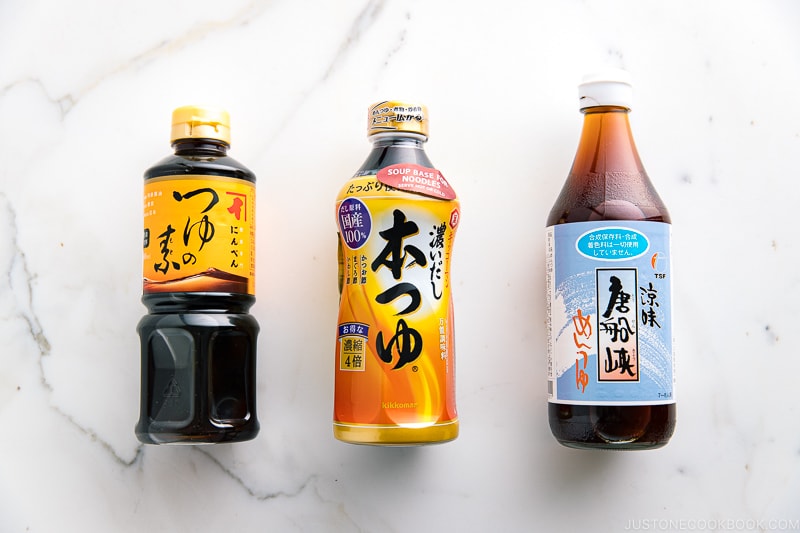
To make noodle soup, simply dilute the tsuyu with water.
The Ratio of Tsuyu to Water
Each brand has different instructions for diluting the mentsuyu. Find the usage guide on the bottle that looks like this label.
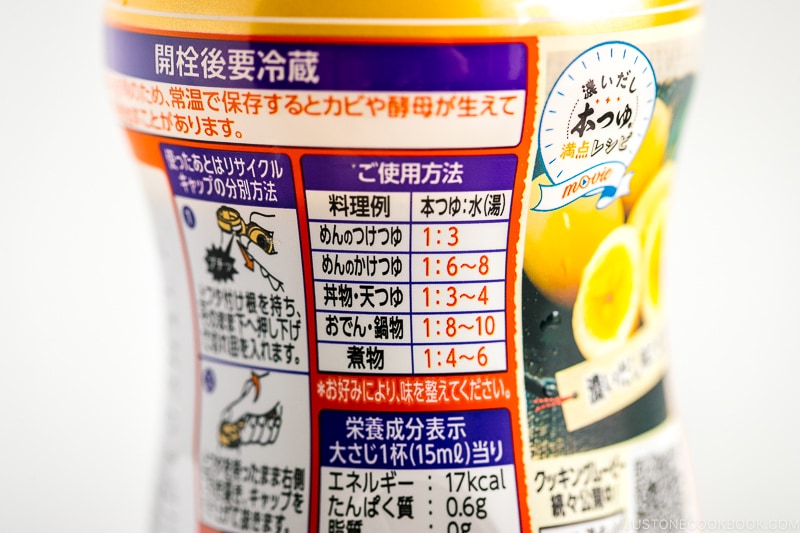
- Dipping sauce for cold noodles (tsuketsuyu) – 1 : 3
- Hot noodle soup (kaketsuyu) – 1 : 6–8
- Donburi dishes or tentsuyu – 1 : 3–4
- Oden or nabemono (hot pot) – 1 : 8–10
- Nimono (simmered foods) – 1 : 4–6
For this Toshikoshi Soba recipe that serves 2, use the hot noodle soup dilution ratio:
- ¼ cup mentsuyu + 2 cups water (1 : 8 ratio) + a splash of mirin
All you need to do is to heat up the broth and boil soba noodles. Add your favorite toppings and enjoy!
Yoi Otoshi O (Have a Great Year Ahead!) 良いお年を!
After all the hearty holiday feasts and sweets, toshikoshi soba is a welcome and comforting dish this time of year. As the Japanese believe, it is a bowl that will tide you over before the temple bells chime and the countdown begins. If you’re looking to adopt a new tradition to ring in the New Year, eating soba noodle soup could easily be your new favorite!
Other Dishes To Enjoy on Japanese New Year’s Eve
- Soba Noodle Soup Topped with Tempura
- Curry Udon
- Kake Udon (Udon Noodle Soup)
- Japanese Hot Pots
- Sushi Party
- Teppanyaki
Once you cross over the New Year, we’ll begin with Osechi Ryori (Japanese New Year’s Food) — the most important feast of the year.
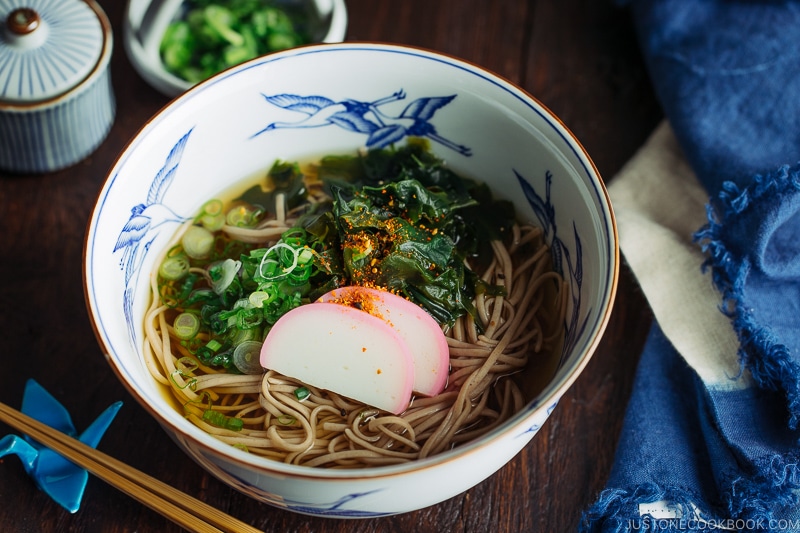
Wish to learn more about Japanese cooking? Sign up for our free newsletter to receive cooking tips & recipe updates! And stay in touch with me on Facebook, Pinterest, YouTube, and Instagram.
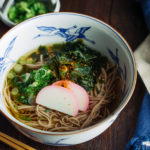
Toshikoshi Soba (New Year’s Eve Soba Noodle Soup)
Ingredients
For the Soba Broth (from scratch)
- 3 cups water (for vegan/vegetarian, you can skip katsuobushi or make Vegan Dashi)
- 1 piece kombu (dried kelp) (10 g; 4 x 4 inches, 10 x 10 cm per piece)
- 1 cup katsuobushi (dried bonito flakes) (skip for vegetarian/vegan)
- 1 Tbsp sake
- 2 Tbsp mirin
- 2 Tbsp usukuchi (light-colored) soy sauce (or regular soy sauce)
- ¼ tsp Diamond Crystal kosher salt
For the Toppings
- 2 Tbsp dried wakame seaweed
- 4 slices kamaboko (fish cake) (skip for vegetarian/vegan)
- 1 green onion/scallion
- shichimi togarashi (Japanese seven spice) (for a spicy kick)
For the Quick Soba Broth (with concentrated mentsuyu; optional)
- 2⅓ cups water
- ⅓ cup mentsuyu (concentrated noodle soup base)
- 1 Tbsp mirin
Instructions
- Gather all the ingredients. [Optional] For the best flavor, soak the kombu in the water overnight (to make cold brew kombu dashi). If you don’t have time, start soaking the kombu as soon as you can. When you're ready to prepare this dish, start bringing a big pot of water to a boil for the soba noodles.
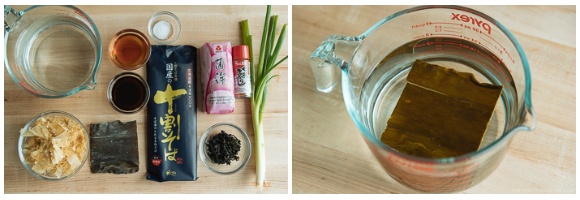
To Make the Homemade Soup Broth
- Add 1 piece kombu (dried kelp) and 3 cups water (or the cold-brew dashi with the kombu) to a medium saucepan. Slowly bring it to a boil over medium-low heat (so the kombu dashi will be more flavorful). When it comes close to boiling, remove the kombu. You can make furikake rice seasoning with the spent kombu.
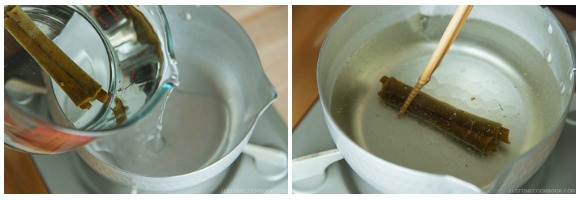
- Add 1 cup katsuobushi (dried bonito flakes) and simmer for 30 seconds. Turn off the heat and let the katsuobushi sink to the bottom of the saucepan. Let it steep for about 10 minutes. Meanwhile, prepare the toppings.
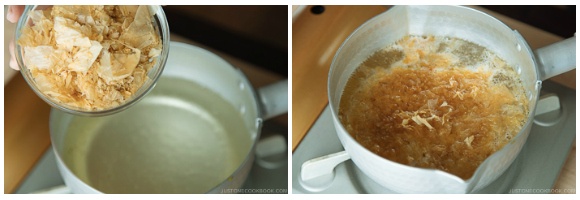
- Drain and reserve the dashi in a measuring cup (or bowl). Discard the katsuobushi or use it to make furikake rice seasoning with the spent katsuobushi. Put the dashi back into the saucepan.
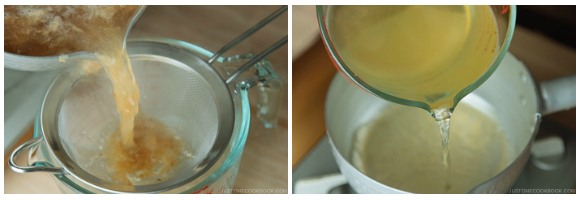
- Add 1 Tbsp sake, 2 Tbsp mirin, 2 Tbsp usukuchi (light-colored) soy sauce (or regular soy sauce), and ¼ tsp Diamond Crystal kosher salt.
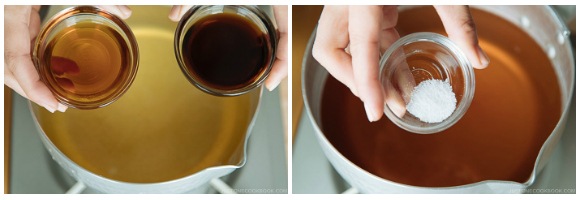
- Bring it to a simmer. Once boiling, remove from the heat, cover, and set aside.
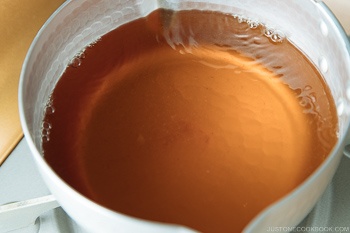
To Prepare the Toppings
- Rehydrate 2 Tbsp dried wakame seaweed in 1 cup water. Then, squeeze the water out and set aside.
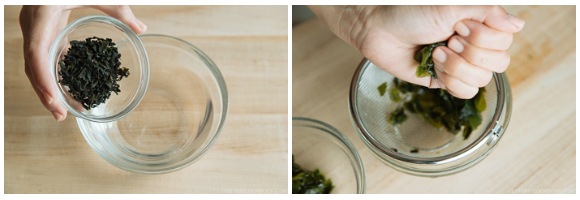
- Thinly slice 1 green onion/scallion.
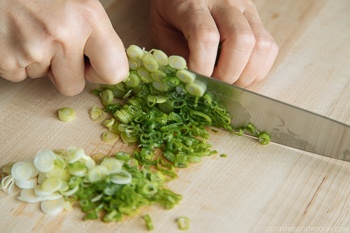
- Slide a knife under the kamaboko to detach it from the wooden board. Thinly cut 4 slices kamaboko (fish cake).
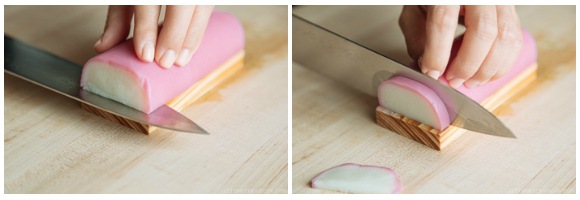
To Cook the Soba Noodles
- In a pot of boiling water, cook 7 oz dried soba noodles (buckwheat noodles) according to the package instructions. You do not need to salt the water.
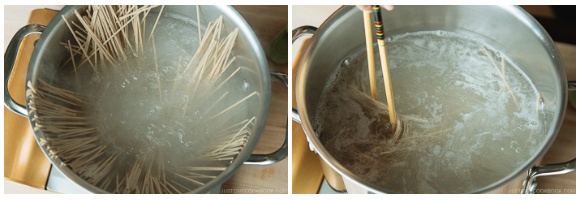
- Drain the soba noodles and rinse them under cold water to get rid of the starch. Transfer the noodles to individual bowls.
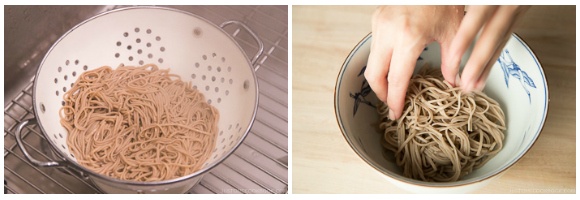
To Serve
- Pour the hot soup broth over soba noodles. Top with kamaboko, wakame seaweed, and green onions. Sprinkle shichimi togarashi (Japanese seven spice), if you‘d like. Enjoy while it’s hot.
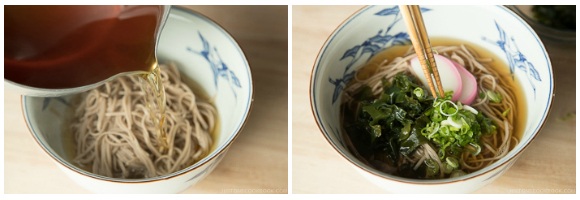
To Make the Quick Soba Broth (with concentrated mentsuyu; optional)
- Follow your mentsuyu bottle instructions to make the broth.

- In a medium saucepan, combine 2⅓ cups water, ⅓ cup mentsuyu (concentrated noodle soup base), and 1 Tbsp mirin. Mix well. Bring it to a gentle simmer over medium heat. Cover with a lid and turn off the heat. The soba broth is ready to use.
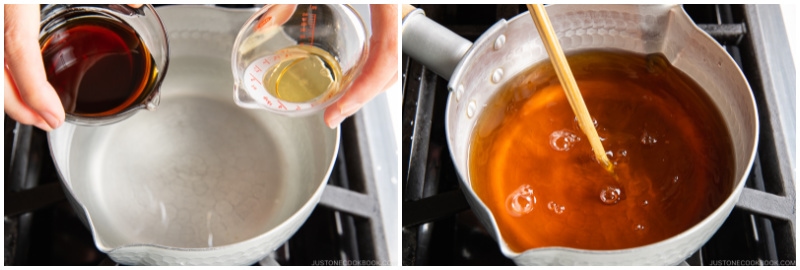
Nutrition
Editor’s Note: This post was originally published on December 30, 2018. It’s been republished in December 2020.
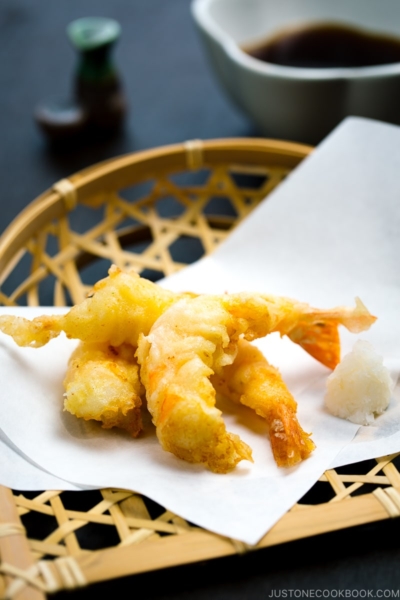
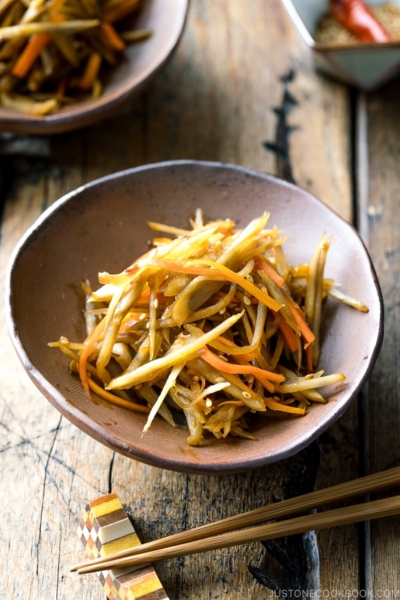






Hello,
Is there mentsuyu without corn syrup? Is there one with just sugar? or coconut sugar?
Hi, Kelly! Thank you for trying Nami’s recipe.
NINBEN makes one using sugar. Here’s the link. (see Essential Japanese Pantry & More) https://www.amazon.com/shop/justonecookbook
Fantastic recipe! I made it for the New Year and was really glad how it turned out.
Hello Yuri! We are glad you enjoyed the flavor!
Thank you for trying Nami’s recipe and for your kind feedback. Happy New Year!